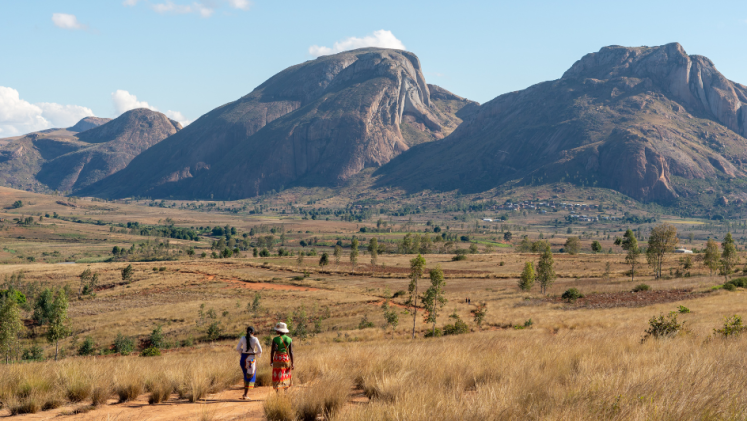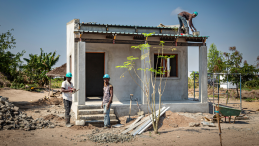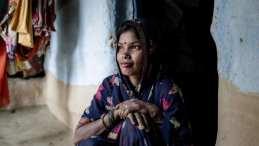Who: Ann-Christine Link, Research Manager & Valérie Andriamanga, Research Consultant at the Environment and Migration: Interaction and Choices (EMIC) division of UNU-EHS
When: 15 - 30 March 2025
Where: Antananarivo, Ambovombe and Mahajanga, Madagascar
Why: To understand climate-related mobility and support local solutions in Madagascar
As part of the CLIMIG-MADAGASCAR project, our researchers David Durand-Delacre, Ann-Christine Link and Valérie Andriamanga are exploring how climate impacts are driving internal migration across the island of Madagascar. During a field mission, they conducted workshops in the southern region of Androy, the north-western region of Boeny and the capital Antananarivo to better understand the challenges and opportunities linked to human mobility in the context of climate change. We sat down with Ann-Christine and Valérie to learn more.
Can you give a short introduction to your project in relation to your field mission?
The project focuses on internal migration triggered by climate and environmental stress. There are many migrants, types of migration and migration routes in Madagascar, but our case study focuses on people moving from Androy to Boeny. Our aim was to understand how people experience and respond to migration on the ground, and how we can support local stakeholders in addressing the challenges they come across. For example, we plan to use the knowledge we gathered for policy briefs and outputs that highlight not only the difficulties of migration but also its potential positive contributions.
What differences did you observe between stakeholder perspectives in origin and destination regions?
In the south, the message is clear: people do not want to leave. Migration is seen as a last resort, often forced by repeated droughts and lack of water for drinking and farming. People emphasized their need for solutions that allow them to stay over and over.
The stakeholders in Boeny are more focused on managing the arrival of migrants. One major concern for people here is deforestation. One of the causes of deforestation is that to earn a living, migrants often sell charcoal made by cutting trees from nearby protected areas. Locals rely on this cheaper charcoal for cooking, but also express frustration over environmental degradation, which causes social tension. Despite having the same nationality, cultural differences between those arriving from the south and people from the north have led to prejudice and sometimes conflict between migrants and host communities. In Boeny, the governor and representatives from migrant associations are trying to address these issues together.
We are hoping to contribute by raising awareness of the links between climate and migration. During the workshops, participants shared personal experiences and regional insights, which helped us to develop tools we call "impact chains". These make it easier to map drivers and consequences of internal migration in Madagascar, especially in relation to climate impacts, both before and after people move. They visualize how different factors are connected and allow us to identify where targeted solutions can make a difference.
What are some of the insights or stories you learned during your field mission?
Climate migration is often overlooked in public discussions, so seeing local authorities – including the governor – engage so fully was encouraging. In Androy, we learned that many participants were unaware of an already existing regional migration strategy. This shows how important it is to not only develop policies, but also ensure they are communicated and implemented effectively.
Additionally, on the day we arrived in Madagascar, there was a cyclone that hit the south of the country. In the past cyclones almost used to be perceived as something positive in the arid south, because they bring rain. However, cyclones have become stronger and bring in a lot more wind, resulting in the loss of lives, houses and crops. We realized that most people do not know what to do when a cyclone approaches, as they were not taught how to respond to warnings. For example, after hearing there was a “red alert” on the radio, many wondered what that meant and what they were supposed to do. There is a clear need for better awareness and disaster preparedness. In turn, this could potentially also support solutions for people in the south beyond migrating north.
Through the workshops, we hope such angles became clearer and will help to add new perspectives and initiatives for strategies supporting the integration of migrants. With the right strategies in place, more positive outcomes can be created not only for those forced to move to the north, but also for the origin and destination regions.
The CLIMIG-MADAGASCAR project is funded by the Federal Ministry for Economic Cooperation and Development of Germany (BMZ) and carried out in cooperation with the Deutsche Gesellschaft für Internationale Zusammenarbeit (GIZ) GmbH.





